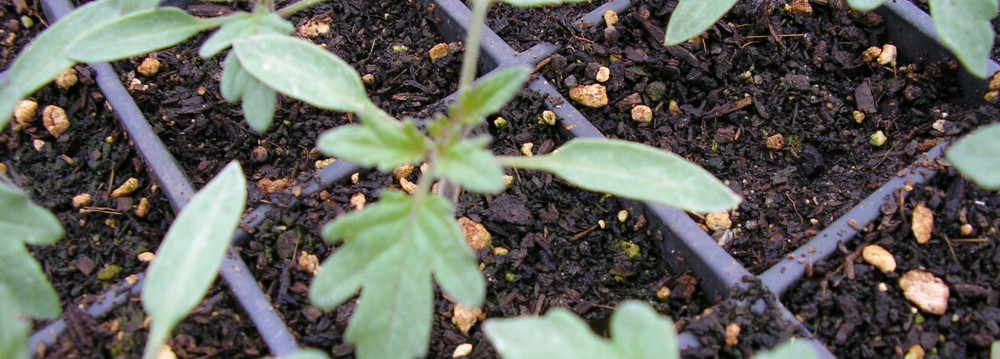The purpose of crop rotation is to improve the productivity of our land, control weeds, produce vegetables, prevent soil erosion, and improve water quality.
Year 1) Green Manure – Soybeans are grown in rows as our green manure crop. The row crop style of planting allows the field to be cultivated to reduce weed pressure for the following vegetable crops. Soybeans are legumes that add nitrogen (N) to the soil for the following vegetable crops. In August, about the time that the bean plants are just starting to set pods, the soybeans are disked under and a cover crop of winter rye and hairy vetch are planted. The winter rye is a winter annual. It grows about six inches tall in the fall and establishes it’s root system. The root system holds the soil in place against winter winds and spring run off. Rye is also an efficient nitrogen scavenger, it will pick up any N that ‘leaks’ out of the soybeans. Hairy vetch is a member of the pea family. It gets established in the fall and resumes growth in the spring.
Year 2) Vegetable Crops – The rye will produce a lot of top growth early in the spring that will add organic matter to the soil. Hairy vetch is winter hardy annual legume in the pea family. The nitrogen fixed by the hairy vetch will help the soil microbes break down the rye and make it available for the following vegetable crops. The rye and vetch are plowed under to kill the rye and prepare a clean seed bed for planting direct seeded crops. Compost is added to the vegetable beds at a rate of about 10 tons per acre to replace the nutrients and humus lost to tillage and vegetable production.
We are experimenting with a technique that uses a roller to push over the rye and crimp the stems when the plants are just about to flower. This kills the rye, but leaves the soil surface covered with a thick layer of mulch. The mulch suppresses weeds, places organic matter on the soil surface ( mimicking a more natural soil system ), keeps the soil cooler, and conserves water. Transplants have to be used with the crimped rye mulch.
Vegetables are planted into beds that one quarter acre in size. There are between 6 and 24 three hundred foot long rows per bed, depending on the crop. Between each bed is a strip of grass that provides habitat for beneficial insects. Lady bugs, various beetles, lacewings, and parasitic wasps help keep some plant eating insects in check.
Year 3) Vegetables and Small Grains – In the second vegetable year onions, peas, beans, lettuce, and small grains are grown. Compost is again added to the beds when non-legume crops are grown. Part of the field is planted to soybeans, oats, rye, field peas, and corn. The peas, beans, oats, and rye are harvested to provide seeds for the green manure and cover crops plantings.
Year 4) Fallow – a year where the the field is just mowed. Fallow gives the soil an chance to rest. The mowing keeps the annual weeds in check and suppresses some of the perennial weeds like quackgrass and thistles. The clippings add organic matter to the soil surface which encourages earthworms. Earthworm castings are just about the perfect soil amendment. Earthworms tunnels allow air and water into the soil. The fallow field is seeded to yellow blossom sweet clover in the spring. The clover is a deep rooted biennial legume. As a biennial, it only grows about a foot tall the first year, but it establishes a deep root system. The tap root breaks up hard layers in the soil and brings minerals from the subsoil back to the surface. As a legume it converts atmospheric nitrogen into a nutrient that other plants can use.
Each fall three of the four fields (not the fallow field) are planted with winter rye and hairy vetch to control wind and water erosion. The cover crops also add organic matter and nitrogen to the soil.
